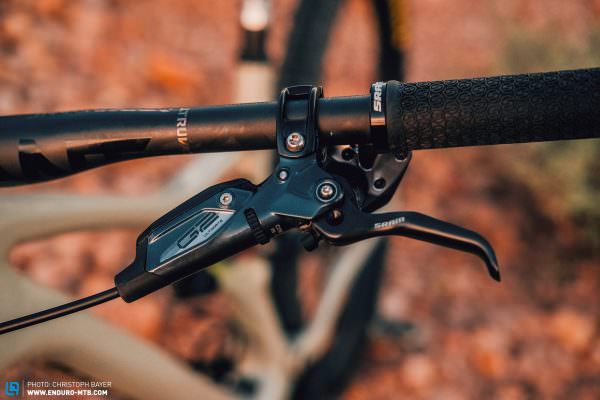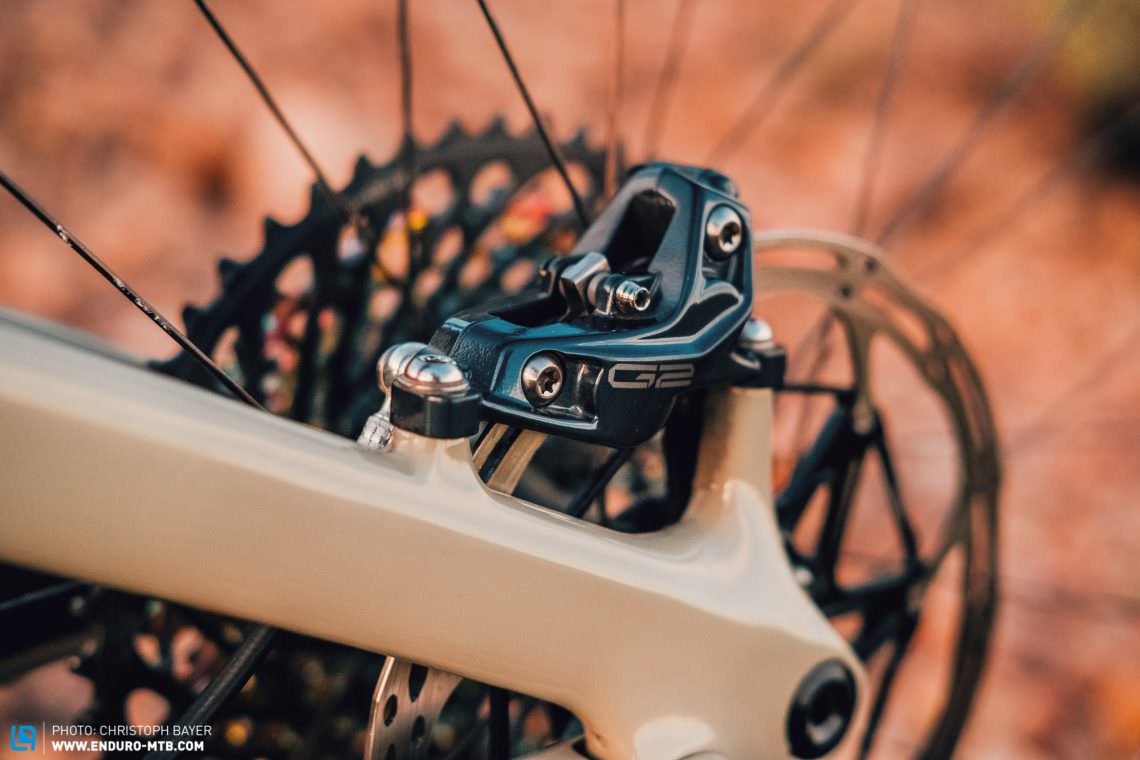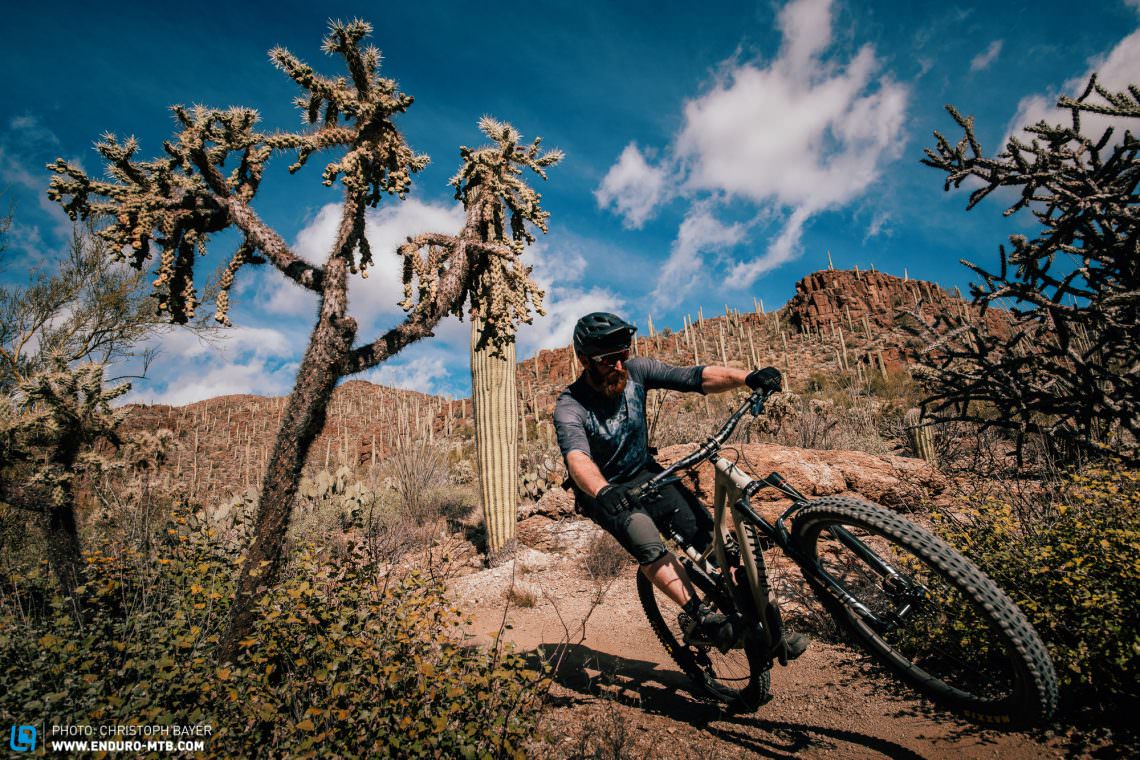STOP! SRAM have just dropped the new G2 brake, they should bring almost Code power at a trail weight. We’ve got the most important information.
Why do brands insist on fitting weaker brakes on our trail bikes? We don’t know about you, but we’ve probably hit higher speeds on trails than on full-bore enduro stages, braking just as hard, but still brands tell us we should run smaller rotors and weaker calipers. When faced with a choice over SRAM Guides and Codes, we would always choose the slightly heavier, but far superior Codes, offering more control, power and modulation. Therefore, It’s great to see that after four years, SRAM have finally dropped a new second generation Guide, named the G2 claiming Code like power for trail riders.

The new SRAM G2
The new SRAM G2 is a ground-up redesign, with new calipers, hoses and levers – there’s even a new pad compound. There will be two models in the lineup, the €190 SRAM G2 RSC and the €295 SRAM G2 Ultimate. The more affordable G2 RSC brake features the reach and contact point adjustment and Guide lever feel, combined with claimed Code power. The SRAM G2 Ultimates are the top-of-the-line option, with a carbon lever blade running on a pivot bearing, SRAM claim it’s their lightest four-piston brake.


What’s changed with the new G2?
Most importantly, SRAM claim a 7% increase in power over the outgoing Guides. This has been achieved by producing a stiffer caliper, with a narrower pocket and larger contact surfaces around the body bolts. SRAM claim that even though they’ve narrowed the pad pocket and removed the heat shield, their switch to phenolic pistons eliminates the need for additional cooling methods and the heat management of the new G2 is the same as the outgoing Guides. SRAM also claim to have improved the pad movement, so that the pad gap remains consistent as the pads wear, ensuring the lever feel and bite point consistent too. While the pad shape is the same, the new SRAM G2 brake pads have a new compound, named the Power Organic compound. Standard Organic and Metallic are also still an option and you can fit original Guide pads into the G2’s and vice versa.

The SRAM G2s also have a new lever design, featuring the same leverage ratio as used by the Guide and current Code – we love the on-trail feel of the Codes so that’s no bad thing. The G2 RSC features contact point adjustment with a pivot bushing, while the top of the line G2 Ultimates, feature a lever pivot bearing and carbon blade.
SRAM claim a weight of 255 g for the G2 RSC and 242 g for the G2 Ultimate with an 85 mm hose, on our scales we measured the Code RSC at 284 and the Guide Ultimate at 222 g. Priced at €190 and €295 for the G2 RSC and G2 Ultimate respectively, SRAM are targeting them at everything from light trail to full bore enduro racing.
SRAM G2 at a glance
- Two models, RSC and Ultimate
- 255 g G2 RSC, 242 g G2 Ultimate
- DOT 5.1
- New SwingLink levers
- New stiffer caliper
- Contact Point Adjustment
- MatchMaker X compatible
- Bleeding Edge bleeding
- Rotating caliper banjo
- Ambidextrous levers
- New Power organic compound
- New hoses are more flexible allowing for neater routing

Conclusion
Are the SRAM G2’s as good as our recommendation, the SRAM CODE RSC’s? As yet, we’ve not back-to-back tested the SRAM G2’s, but if they bring the same feel and power as the Codes, at a slightly reduced weight, then SRAM are onto a winner. Powerful braking for all! Stay tuned for a full test soon.
For more info head to sram.com
Did you enjoy this article? If so, we would be stoked if you decide to support us with a monthly contribution. By becoming a supporter of ENDURO, you will help secure a sustainable future for high-quality mountain bike journalism. Click here to learn more.
Words: Photos: Christoph Bayer









